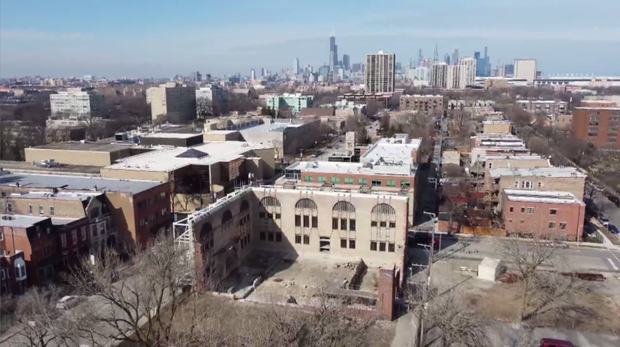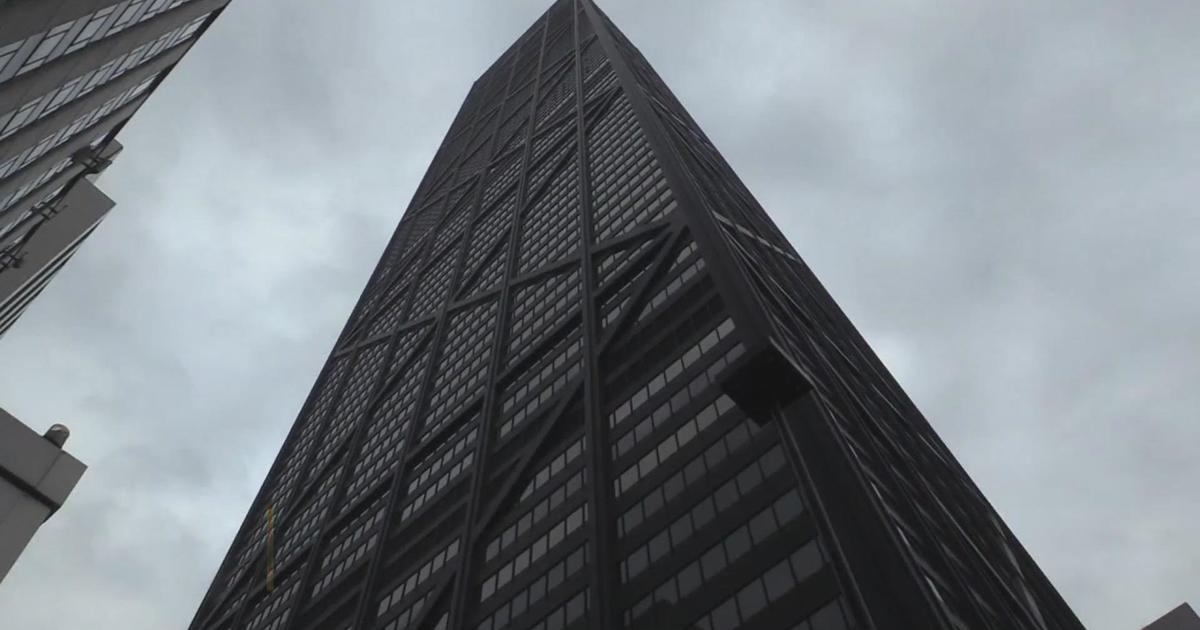Bronzeville: A rich history as Chicago's Black Metropolis, and efforts for a promising future
CHICAGO (CBS) -- Bronzeville – the Black Metropolis – was the community where African Americans from the South lived and thrived in Chicago during the Great Migration.
Now, an urban historian is going viral as he brings the history of the iconic neighborhood – and others – to the masses.
CBS 2's Irika Sargent went along for the ride with historian Shermann "Dilla" Thomas to see the rich culture of Bronzeville past and present.
They started at the Pilgrim Baptist Church at 3301 S. Indiana Ave.
"Everything dope about America comes from Chicago," Dilla said. "This building is very, very much living proof – the birth of gospel music in this country."
It was at Pilgrim Baptist where the voice of Mahalia Jackson echoed off the wood ceilings and pews.
A fire gutted the church in January 2006, but the exterior walls of the church remain standing – and the history remains powerful.
A couple of miles away, Dr. Daniel Williams made history at Provident Hospital in 1893.
"He performed the world's first successful open-heart surgery at Provident Hospital - located on the South Side of Chicago - America's first all-black hospital," Dilla said.
Dilla – an urban, and some may say unlikely, historian – can tell you thousands of facts about every part of Chicago. But on a bus tour – with a captivated crowd that looks very different from Dilla – he shared one of his favorite neighborhoods by focusing on the unique Chicago story of Bronzeville.
The Black Metropolis was created in the early 20th century, when thousands of African Americans moved to Chicago from the South during the Great Migration. They hoped for a better life in the North.
But when they were restricted to a certain part of Chicago, they thrived in a city within a city – with their own churches, stores, homes, restaurants, and blues clubs in Bronzveille.
There is pride on that history that Dilla learned from his father as a young boy on the South Side.
But it was his own daughter who sparked an idea to share it on social media -where he has become a viral historian.
"I wouldn't have known what TikTok was at all without the help of my now 10-year-old daughter," Dilla said. "She was 8. She was the one that introduced me to TikTok."
She wanted to dance with dad on the app.
"I tried it. We didn't do too good," he said. "I thought that we should start telling Chicago history stories - and I did."
Dilla has more than a million likes so far. Every major sports team in Chicago threw their support behind him to get a tour bus – and make these kinds of history experiences a reality.
Sargent: "When you walk into a room, they see the dreads; the baseball hat; a Black man from Auburn Gresham. Do you feel like you have to fight against that to prove you have credibility?"
Dilla: "Oh yeah, absolutely. I'm a person who does the research and I disseminate history. And that makes me a historian. And I don't have to have a tweed coat, and a bow tie, and a Ph.D. to have the information accurate. But I follow very strict rules before I allow myself to post or open my mouth about something historic. I do my homework."
And to the audience with whom we joined Dilla on the bus, it showed. His passion for Bronzeville and all its history is contagious.
"The thing I love about Bronzeville the most is that almost on every block, some luminary lived there," he said. "If you're on 42nd Street right off of King, you're at the home of Dr. Daniel Hale Williams. If you're on 40th and Vincennes, Nat King Cole lived there. If you're on 37th and Michigan, Dr. Margaret Burrows who founded the DuSable Museum of Black History. We can probably do that pretty much for every block of Bronzeville, and I love that."
Louis Armstrong lived at 421 E. 44th St. Ida B. Wells-Barnett lived at 3624 S. Dr. Martin Luther King Jr. Dr.
But on many Bronzeville blocks, the decline is glaring.
"A process that started in the 1950s," said Bernard Lloyd. "The city had been disinvesting for many years, the city had not been providing municipal services."
Lloyd is working to revitalize Bronzveille through his company, Urban Juncture. He said in the 1950s, people started moving out of crowded Bronzeville when fair housing laws started letting people live and shop in other neighborhoods.
"Between 1950 and 2010, the community lost three quarters of its population," Lloyd said.
Now, times are changing yet again. Bronzeville is growing – with new residents, and a winery.
Lloyd's company moved into a vacant building, and he is investing - in a culinary hub on 51st Street, and an artist incubator in the historic Forum Building on 43rd Street.
"There is still such a rich heritage here when you know where to look," Lloyd said.
And Bronzeville was just declared a National Heritage site – passed by Congress and signed into law by President Joe Biden.
"It makes me very proud and it humbles me," Dilla said.
And it gives the urban historian hope as he shares the stories of Bronzeville block by block.
"This designation allows for us to push forward in requesting resources, and requesting to save certain buildings; to save property - but also to believe in people who call that place home because it has historic and contemporary value," Dilla said.
There are only two other National Heritage sites in Illinois – so this is huge for Bronzeville.







